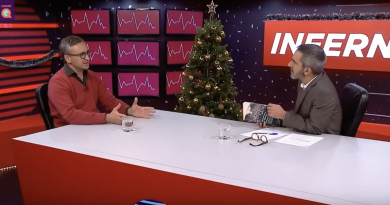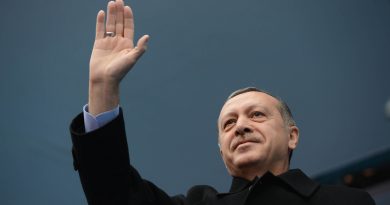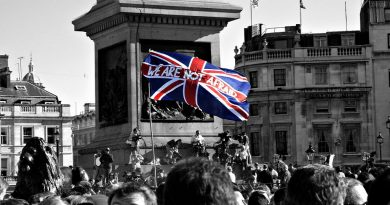The life of Ayatollah Akbar Hashemi Rafsanjani
Ayatollah Akbar Hashemi Rafsanjani was regarded as the second most powerful figure in the Islamic Republic of Iran after the Supreme Leader, Ayatollah Ali Khamenei. He was the embodiment of what has made the survival and the stability of the Islamic Republic possible – a subtle compromise between two seemingly disparate orientations. On the one hand, he had been a zealous revolutionary, one of the founding fathers of the Islamic Republic. On the other hand, he acted as an astute pragmatist who pursued more creative measures to ensure the longevity of the Islamic republic, even if it meant reaching out to the US – seen as the meddling, duplicitous ‘Great Satan’ – or the jettisoning of the autochthonous economic policies of the early revolutionary days.
Hybrid politics
Although he had been a stalwart revolutionary and a key architect of the revolution, Rafsanjani sought to overcome Tehran’s international isolation by pursuing détente with its neighbours, improving ties with European countries, and seeking rapprochement with the US. For a revolution infused with anti-imperialist, anti-West rhetoric, opening up the country to the outside world was almost an affront. In fact, this seemingly audacious position was emblematic of Rafsanjani’s broader strategic vision to upgrade the Islamic republic in order to ensure its survival.
Following the death of the regime’s charismatic founder Ayatollah Ruhollah Khomeini in 1989, and the end of the Iran-Iraq War known as the ‘Imposed War’, Rafsanjani saw the need to enhance the system’s performance and legitimacy. He set about reforms that included streamlining the bureaucracy, replacing ideological purists with technocrats, de-nationalising the economy, promoting private enterprise, rebuilding the nation’s infrastructure, attracting foreign investment, integrating Iran into the global economy, and easing restrictions on people’s personal and social lives.
He also advocated flexible and conciliatory dynamics to temper the Islamic republic’s deep contradictions. The most salient of these is the conflict between clerical guardianship and popular sovereignty of a highly diverse population. He sought a balance between the republican attributes of the state and its theocratic elements, a duality that is characteristic of Iran’s Byzantine political system. Earlier in the 1980s, he pushed for constitutional changes that shifted power to the republican institutions of the system by discarding the position of prime minister, and effectively turning the presidency, a weak position by design into the second most powerful office in the country.
Later in his career he was more explicit: “The title of Islamic Republic is not just a formality. This is a reality passed on to us on the basis of the Koran, as well as the religious sayings of the (Shiite) Imams and the prophet. We believe in them. We should have them [the Islamic and the Republic] at the same time. Rest assured, if one of those two aspects is damaged we will lose our Revolution. If it loses its Islamic aspect, we will go astray. If it loses its republican aspect, it [the Islamic Republic] will not be realized. Based on the reasons that I have offered, without people and their vote there would be no Islamic system.”
The Future of Reform
It was this vehement support for the electoral will and for civic participation that will be missed with Rafsanjani’s passing. This can be heard in the cacophony of voices postulating that his departure will be a major blow to the reformist camp, with particular reference to the current moderate-orientated president, Hassan Rouhani, who is up for re-election later this year. Indeed, Rafsanjani’s death will mean that Rouhani has lost the support of a political heavyweight and this may create more challenges for his re-election. However, this will not alter the patterns and trends that have unfolded in Iran since the reformists gained force and came to power under Khatami’s presidency in the 1990s. Even before Rafsanjani’s death, a spokesman for the country’s Guardianship Council, Abbas Ali Kadkhodai, which oversees the elections, said on 4 January 2017, that ‘there is no guarantee that a sitting president can run for a second term.’
Therefore, Rafsanjani’s passing will not determine Rouhani’s re-election. Rouhani has to contend with both institutional constraints and a strong conservative tide as Khatami did. What remains in his favour is the strong impetus for change ‘from below’ – civil society; market forces that are inclined towards integration in the global economy; the public mood dispelling isolation for normalisation of relations with the West (which manifested in the historic nuclear deal); the information age, which creates more fluidity owing to social network sites; the country’s demographics that overwhelmingly embody the youth’s aspiration for integration and the easing of social pressures. This momentous tide will not be reversed with Rafsanjani’s passing – it did not subside when Mahmoud Ahmadinejad and the conservatives came to power and it is unlikely to be confined four years into Rouhani’s moderate reform-oriented presidency.
Modernisation from Below
What we have witnessed over the past two decades has been a pluralistic momentum for gradual, reform from below within the framework of the Islamic republic. This is a unique pattern of change that transcends the developmental designs for the or the ‘Arab spring’ templates. This is an Iranian modernity corresponding to contemporary needs. In many way, Rafsanjani was on top of the country’s pulse all along, recognising that in order to ensure the regime’s survival, performance and legitimacy, it needed to be upgraded. This is Rafsanjani’s most significant legacy: the passing of the baton of moderation and pragmatism, bringing to the new generation in Tehran, a new dawn and a future.
Ayatollah Akbar Hashemi Rafsanjani in 2013. Photo by Siamak Ebrahimi (cropped) / CC BY 4.0
![]() This work is licensed under a Creative Commons Attribution-NonCommercial-ShareAlike 4.0 International License.
This work is licensed under a Creative Commons Attribution-NonCommercial-ShareAlike 4.0 International License.




